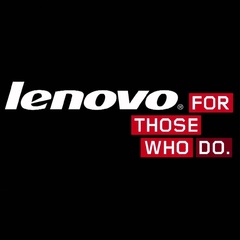
Mark77
Member-
Posts
1,526 -
Joined
-
Last visited
Awards
This user doesn't have any awards
Recent Profile Visitors
2,056 profile views
Mark77's Achievements
-
500gb HDD, good lord, get rid of that, go with a SSD. Its practically criminal that Windows 10 will even allow itself to be installed on anything but a SSD.
-
Is it worth the effort to overclock?
Mark77 replied to KhakiHat's topic in CPUs, Motherboards, and Memory
Overclocking has been a waste of time since the days of the Pentium II. -
NIC for gamer (I want to buy Intel Network Interface Card)
Mark77 replied to Pingwin's topic in Networking
Games use incredibly little bandwidth. And the Marvell or Broadcom ethernet chips (which are usually installed when a vendor is too cheap to use Intel) really aren't all that bad CPU-wise.. I've pushed full saturation of gig-E speeds overall of them with relatively little CPU utilization. -
I think the Dell Bluetooth 370 is a PCI-E card. In the miniPCI-E format, although there's plenty of adapters available to adapt such to full-size PCI-E. Tons of them on eBay for cheap, like $3-$5. Of course, if you go through the trouble to 'adapt' such a card to a full PCI-E slot, you may as well just do a combo miniPCI-E 802.11n (or 802.11ac) + BT 4.0 card anyways.
-
You'll probably have to provide us with a lot more information on your VPN client software. Its probably possible, but you might have to do some PowerShell stuff to make it work. Alternatively you could just bind your VPNs to something like pfsense, and bridge them right onto your network. Or expose them as separate VLANs within your network, to which you can create separate virtual access points.
-
To MLPS or not? Office connection across seas.
Mark77 replied to JesseStillwell's topic in Networking
Do you have access to more than 1 in Thailand? Perhaps if you obtain 2 independent ISP connections, you could build a load balancing tunnel between the Thailand and the Australian office that would give you higher effective bandwidth. That is, assuming that your two (Thailand) ISPs use independent paths. Doing multiple load balancing tunnels may be a good idea anyways to increase the number of packets that are contending for the same overseas connections. MPLS is most likely overkill. But I think you'd be better off, if you can, ditching that Cisco stuff and going with pfsense / OpenVPN for your VPN needs. -
You'll want a CPU that supports AES-NI. I'd suggest something based on an Intel "Q" chipset, and a CPU that supports Intel AMT, so you can remote into the machine with VPro. Haswell is probably the sweet spot these days in terms of used gear. If you can live with a single Gig-E, then eBay is full of Lenovo M73's with Intel i5-4570T CPU's, Q87 chipset, and some RAM for $120-$150.
-
4x40gig-E or 2x100Gig-E networking gear is crazy $$$$ though to actually run into those limits...
-
Linus and friends: Please check this video out from Puget Systems: Basically sounds like what you're trying to do, albeit its on FreeNAS, not Windows Server. Isn't one of your big 48-drive rackmount video servers already running on FreeNAS? They seemed to come out with some pretty decent/impressive results overall, and that might be applicable to the sort of workloads that occur internally at LMG... Completely plug and play as well, no Linux/*BSD/Unix or Windows magic involved either...
-
Terrible advice. RAID-5 is slow and far less reliable. I have 4 drives in a RAID-10 in a 'far' configuration -- they're 150mb/sec drives each, and I'm able to read off of the array at 600mb/sec.
- 3 replies
-
- raid
- hard drives
-
(and 1 more)
Tagged with:
-
RAID-5 is basically obsolete. For your application, I suggest a software RAID-10. With 6 x 8gb drives, in RAID-10 "far", you should be able to almost saturate a 10gig-E connection with 24TB of space. 200mb/sec writes shouldn't be a problem with such setup. RAID-5 tends to be very slow with writes because it has to read back existing data, and then recalculate the parity, and then rewrite. Its also not very reliable at such large drive sizes.
-
So I have an Intel 330 240gb (Sandforce), and a Crucial 250gb MX200 drive. I've been using Bitlocker, which relies upon the in-drive routines for encryption on the MX200. The 330 is sitting on the shelf. The Intel doesn't have built-in encryption. Any encryption would be derived from the host executing routines. So basically the moral of the story is that I should probably convert the laptop to the Intel drive, right?
-
Most business-grade laptops have 2 slots. One for WLAN, ie: WiFi cards, and a second one for WWAN like those 4G cards. So it depends upon the machine you're using. Remember that a SIM card slot has to be available as well.






